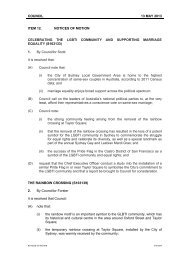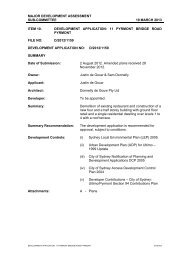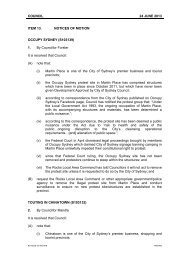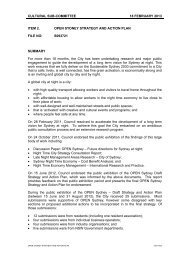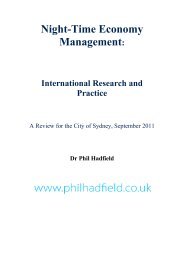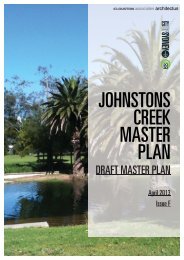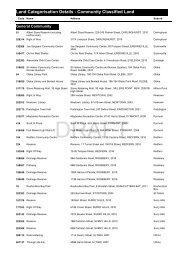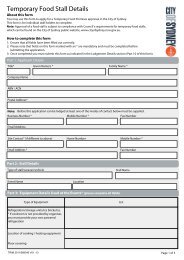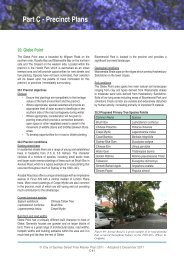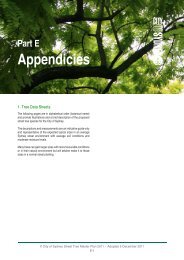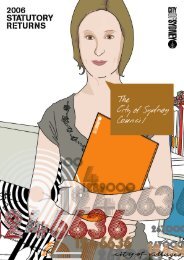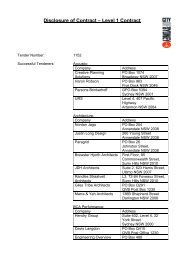Histories of Green Square - City of Sydney
Histories of Green Square - City of Sydney
Histories of Green Square - City of Sydney
You also want an ePaper? Increase the reach of your titles
YUMPU automatically turns print PDFs into web optimized ePapers that Google loves.
<strong>Histories</strong> <strong>of</strong> <strong>Green</strong> <strong>Square</strong><br />
Figure 4.4 <strong>Sydney</strong> – Water Supply Sources 1837–1888 (Source: Dan Coward, Out <strong>of</strong> Sight, 1988).<br />
south <strong>of</strong> <strong>Sydney</strong> became immediately apparent, its natural<br />
drainage characteristics again influencing decisions about<br />
human usage. The highest concentration <strong>of</strong> these noxious<br />
industries moved further south to Botany Bay itself, but many<br />
also established themselves in the Waterloo and Alexandria<br />
area. 17 The Waterloo Swamps, situated to the north <strong>of</strong> the<br />
Lords Dam system, were separate from the Water Reserve and<br />
had outlets into Shea’s Creek. As already noted, wool washing<br />
and fellmongering industries had already been established in<br />
the area <strong>of</strong> the Waterloo Swamps, from the mid-nineteenth<br />
century. Other noxious industries followed, including hide<br />
tanning, boiling down establishments and abattoirs.<br />
34<br />
The 1883 Royal Commission Inquiry into Noxious and<br />
Offensive Trades noted a number <strong>of</strong> such industries in the<br />
Waterloo/Alexandria area and detailed their impact on the<br />
environment. In an examination <strong>of</strong> Mr. Benjamin Ere’s<br />
Boiling-down and Woolwashing establishment, Cooks River<br />
Road, Alexandria, the Commissioners noted that five hundred<br />
gallons <strong>of</strong> waste water ran <strong>of</strong>f into Shea’s Creek every day. The<br />
creek was described as having:<br />
…a quantity <strong>of</strong> thick slimy matter…continually on<br />
the surface; making it necessary to form a surface<br />
lock, by floating a plank secured by a chain on each<br />
side until the matter collects in a mass, the lock being<br />
opened occasionally to let that go above stream. 18<br />
© Scott Cumming<br />
© Scott Cumming<br />
Chapter 4 – Chimneys and Change<br />
Fig. 4.5 The path <strong>of</strong> the southern outfall sewer through the Waterloo and Alexandria. (Source: Mitchell Library map M4 811.18<br />
ghhd /1892/1 Sh 2(2), courtesy <strong>of</strong> Mitchell Library, State Library <strong>of</strong> NSW.)<br />
35



